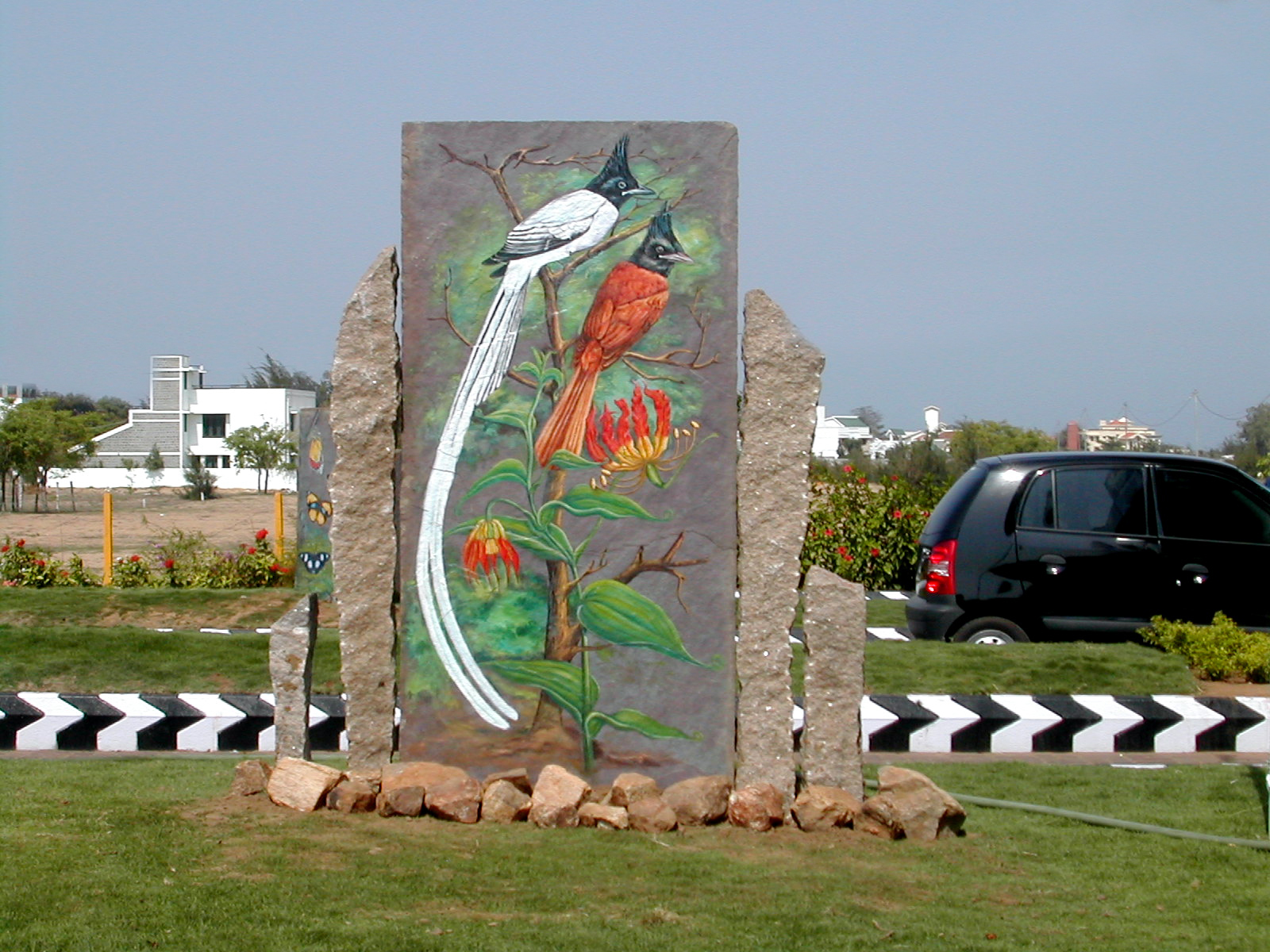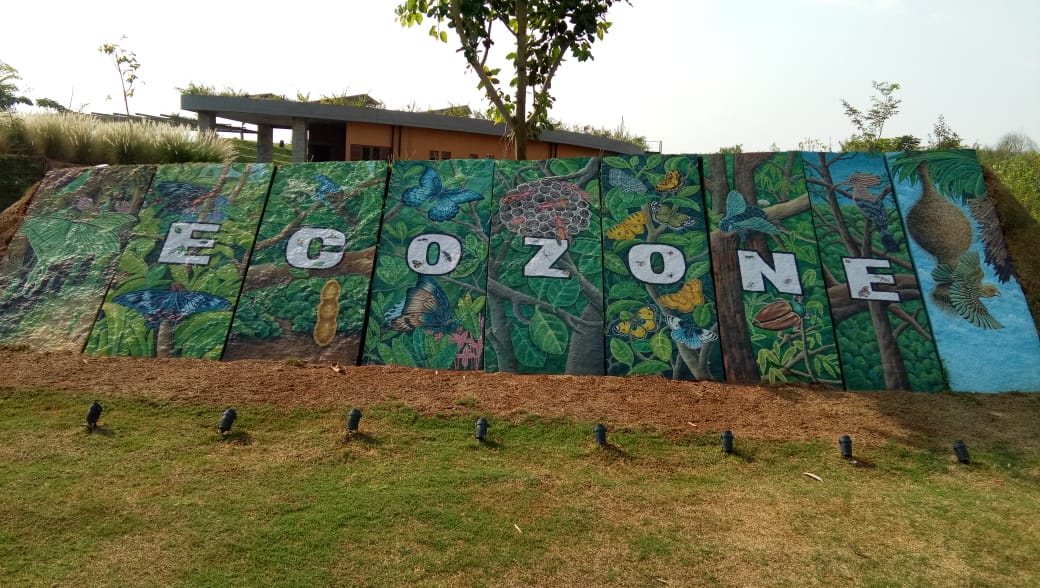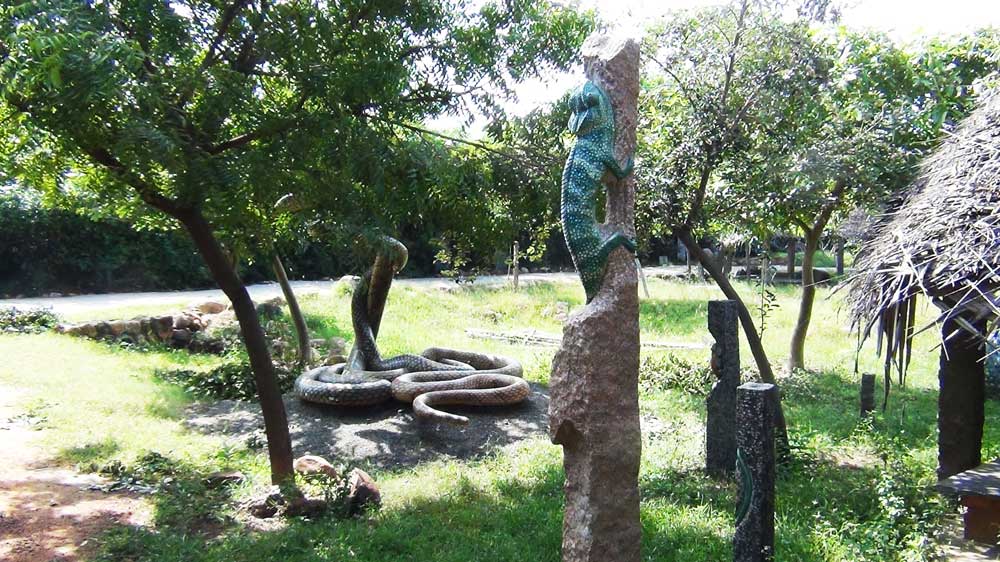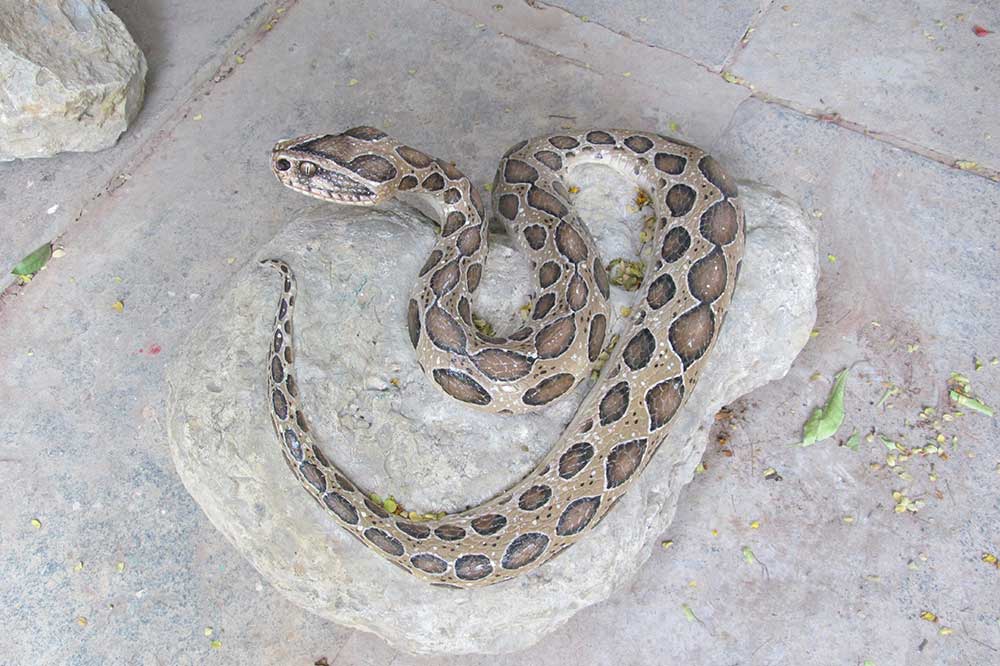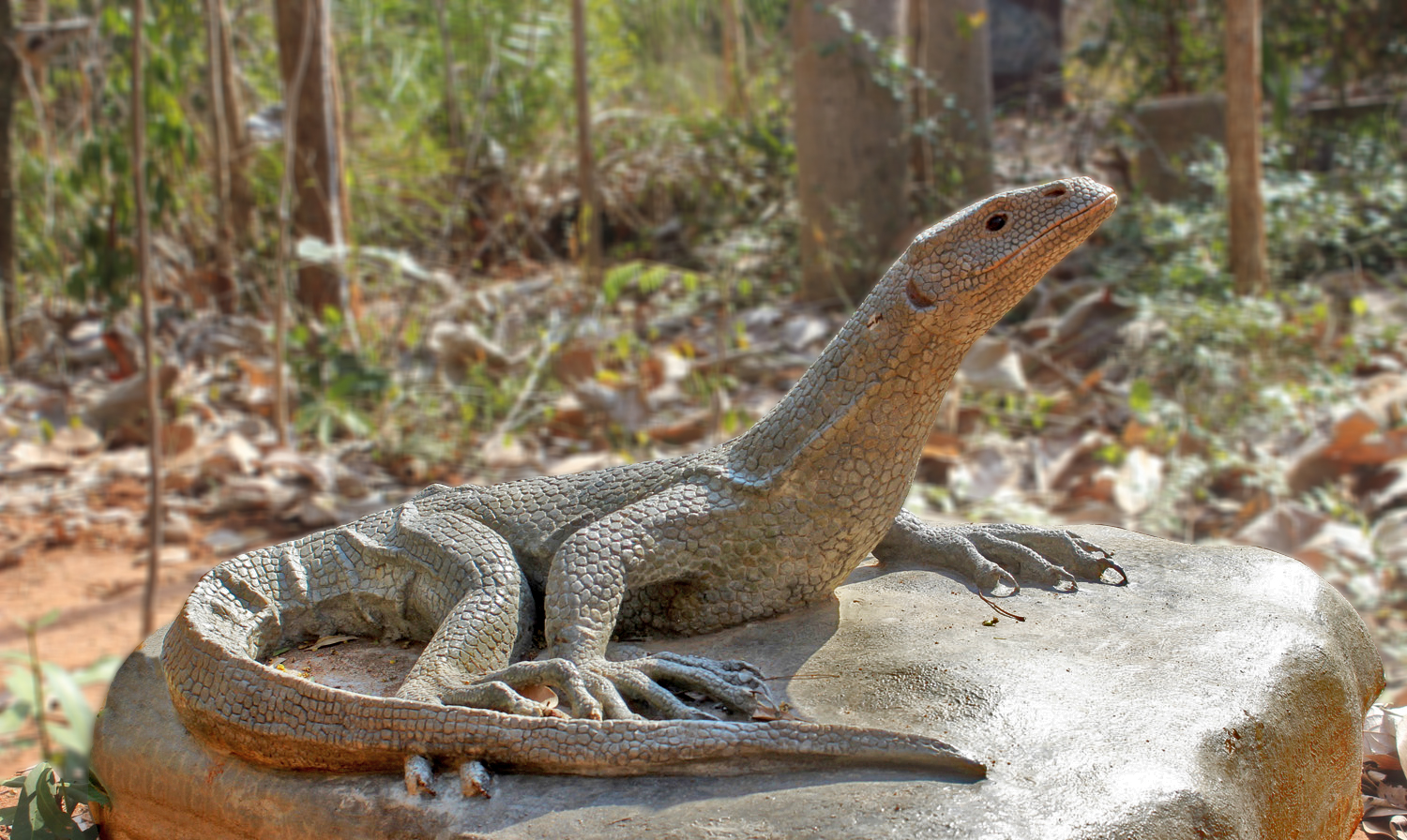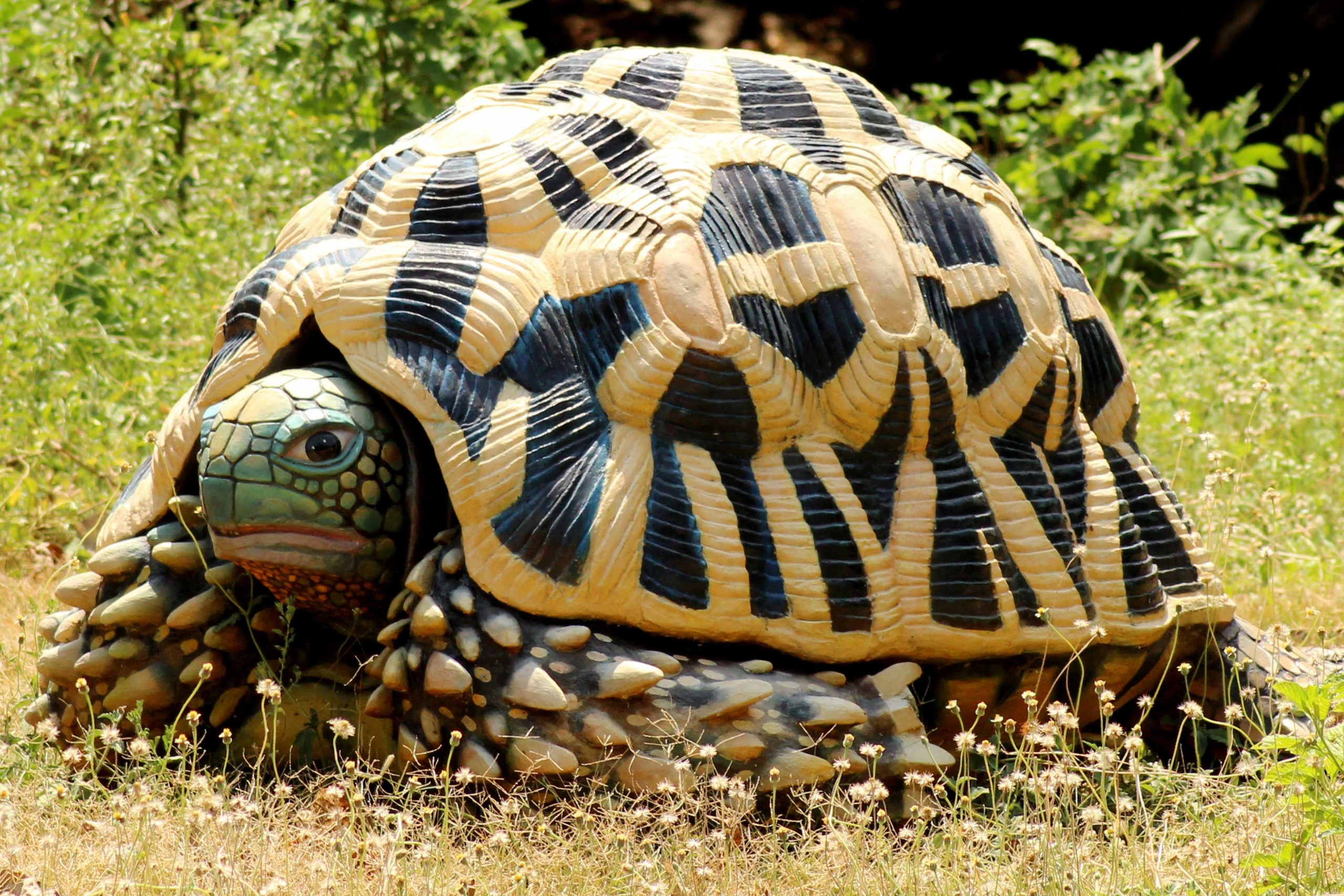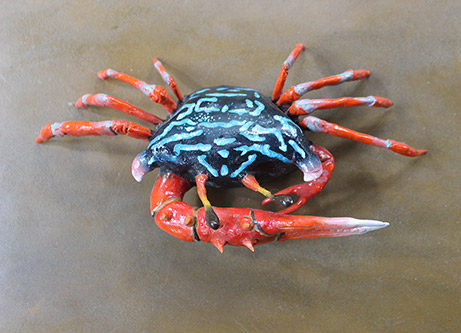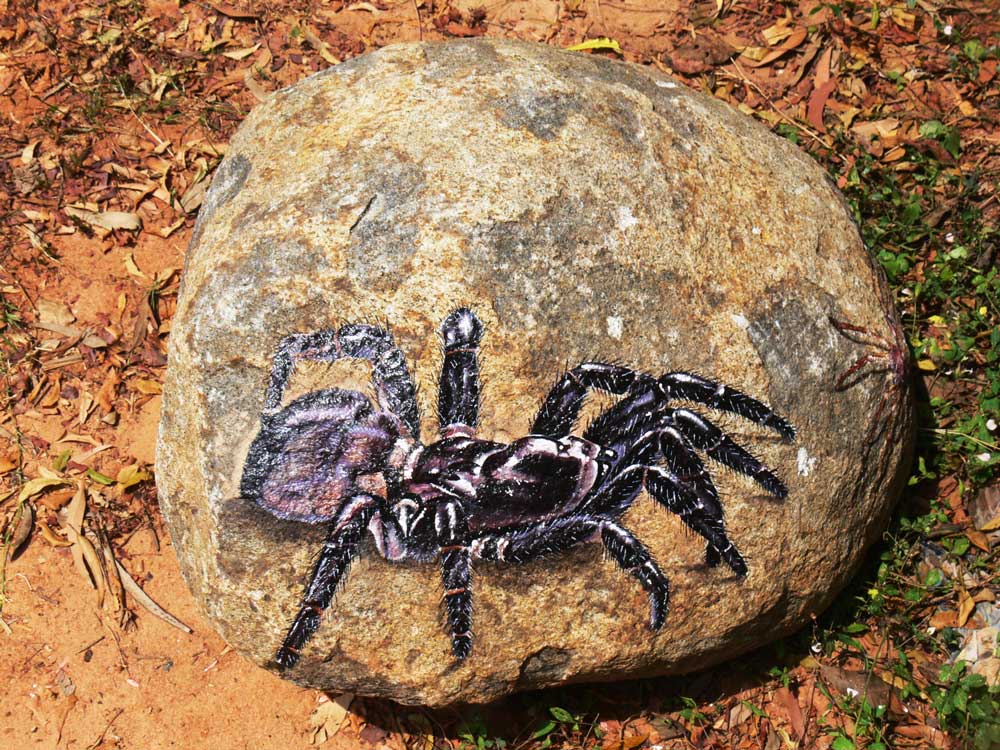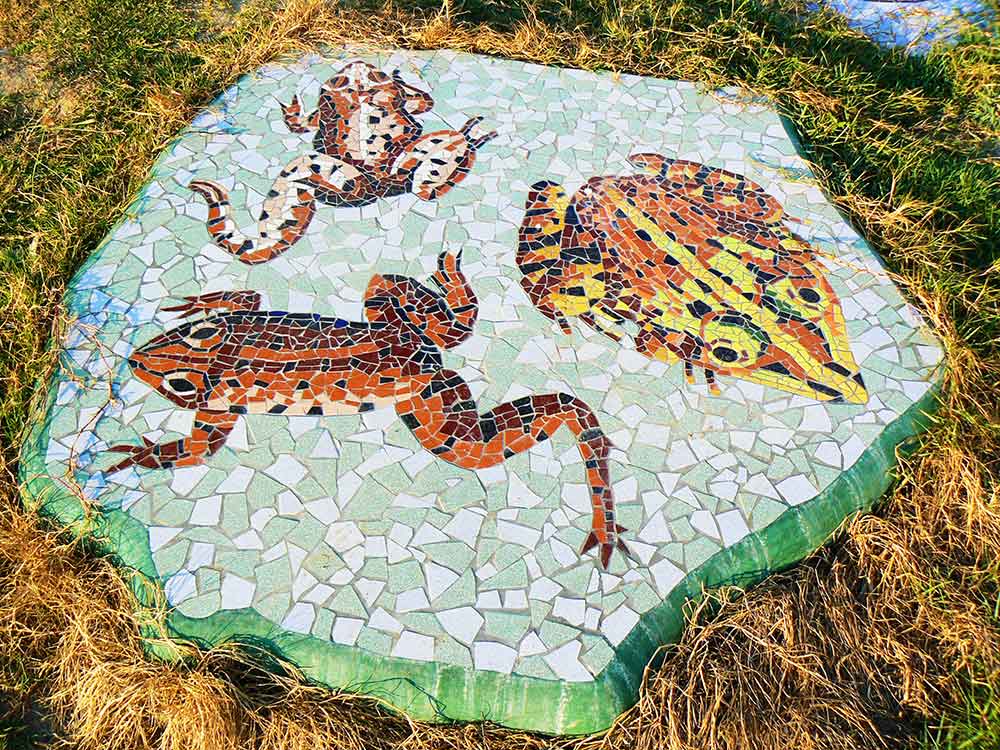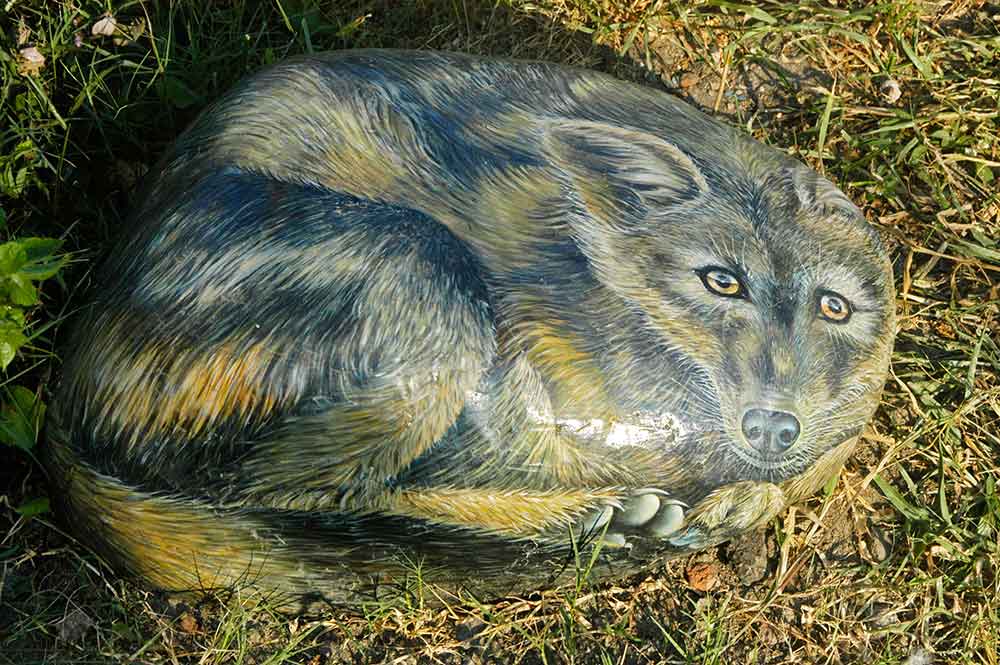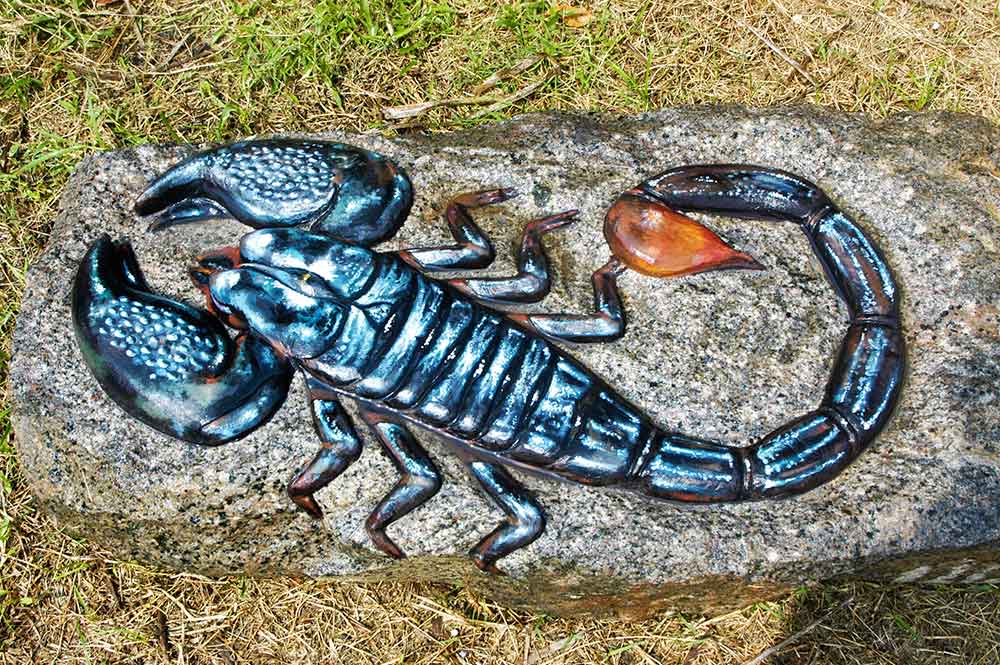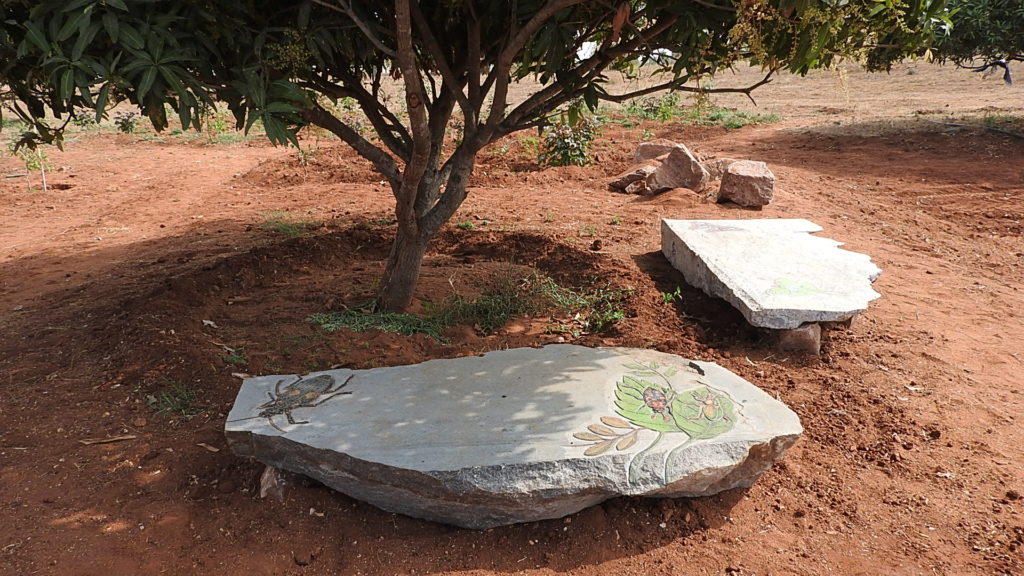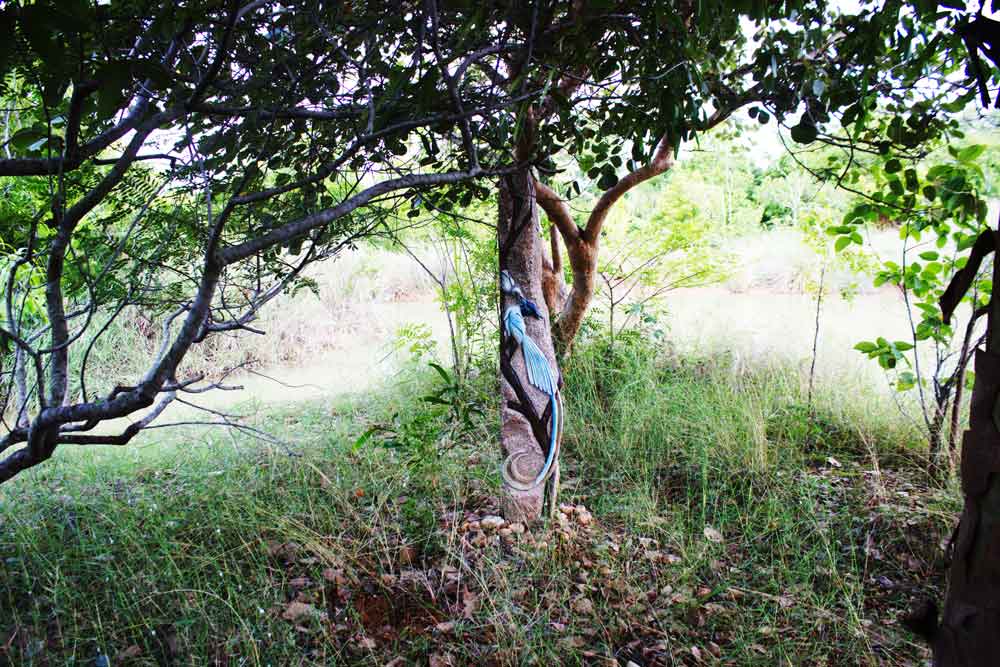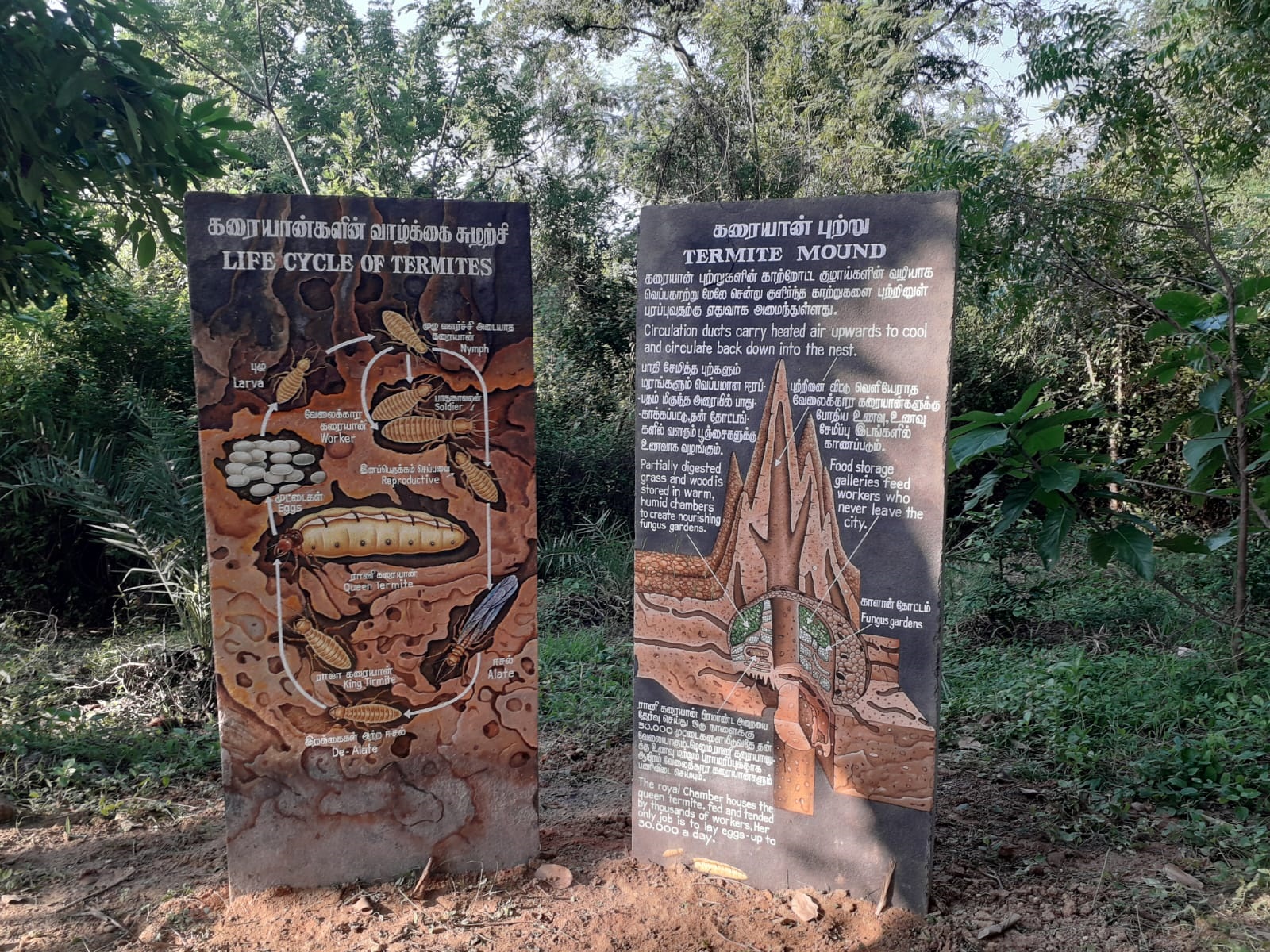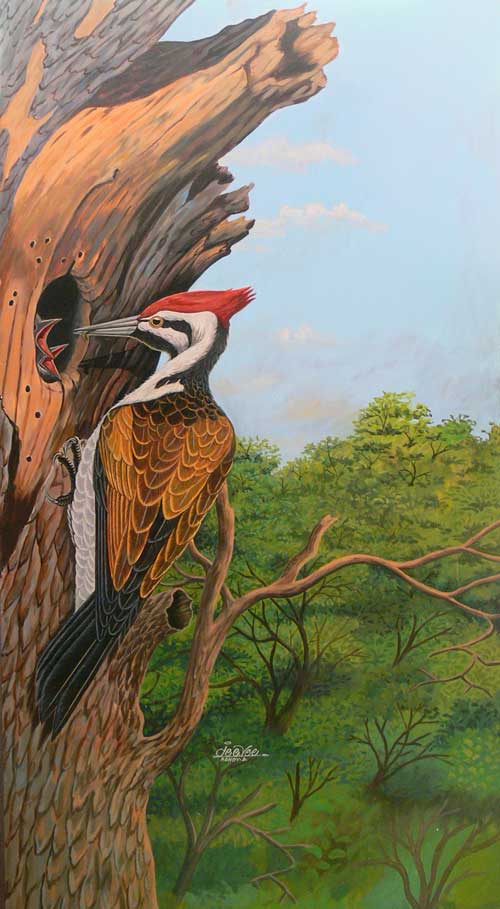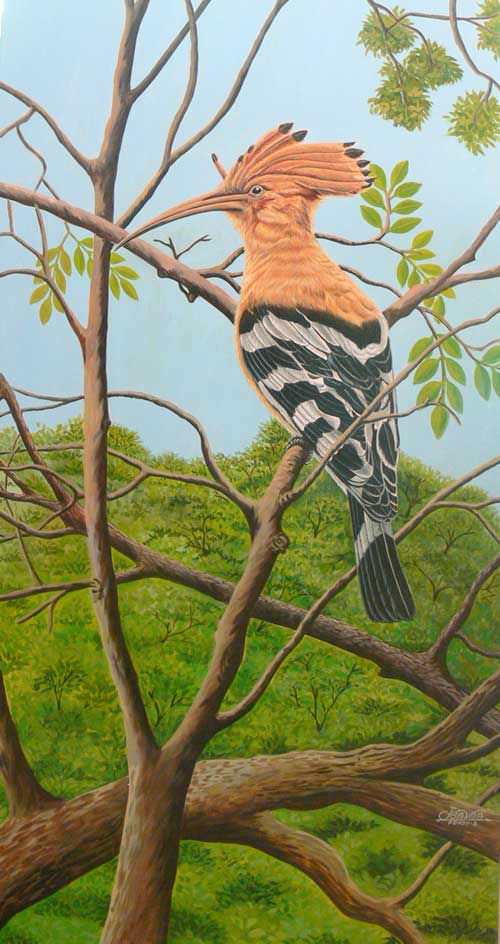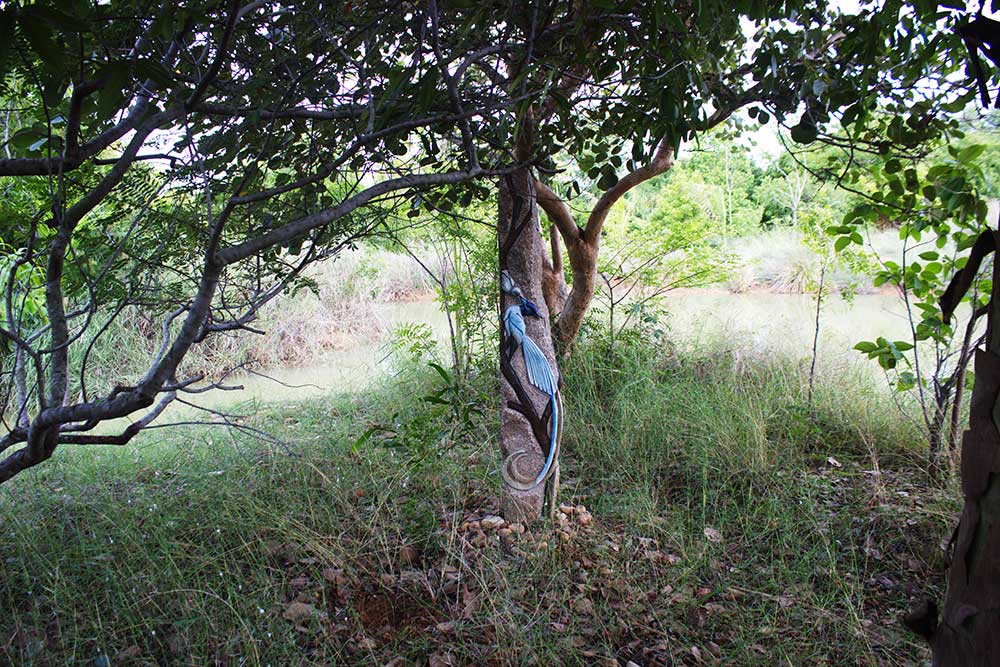Art Collective of Pitchandikulam
Art and environment go hand in hand at Pitchandikulam. Ever since Pitchandikulam was established in 1973, we have been experimenting with imagery to sensitize people to the need to conserve their native biodiversity. We are continually trying to represent and share our experiences of wildlife through imagery, and through wildlife art, everyone can express their feelings in a personal way. Wildlife art seeks not only to generate an enthusiasm for the natural world, but also to advance the interest, educati on and enjoyment of the public in the conservation of wildlife.
Our art experiments at Pitchandikulam carry on the tradition of ‘true wildlife art’ where naturalism and exactitude are the catchwords. To a large extent we have concentrated on outdoor wildlife art, although our artists have in recent years started to experiment with a more studio-based and scientific approach.
Please Click here to view Pitchandikulam Art collective ..
The artistic media we produce includes
Painting on granite slabs
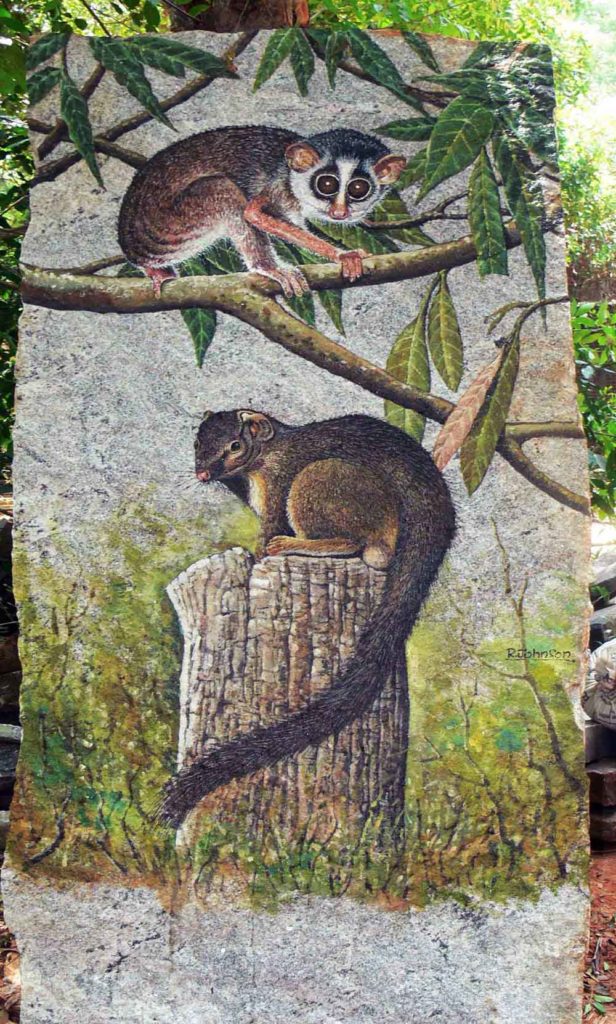 Kadapa stone rarely exceeds a size of 7ft x 2ft, which means that approximately only 5ft is seen above ground (it is necessary to bury at least 2ft below ground for the stone to be stable). If dramatic compositions are necessary, it is advisable to paint on granite slabs which can be procured in any size. We have found that groupings of four to six stone slabs make effective confluent displays, especially if they have to be viewed from a distance. The only drawback of granite slabs is that they do not show the mixture of colours or texture of Kadapa stone, have a relatively rougher surface which cannot incorporate detail and, if they are large, may be difficult to move around and install without the use of heavy machinery.
Kadapa stone rarely exceeds a size of 7ft x 2ft, which means that approximately only 5ft is seen above ground (it is necessary to bury at least 2ft below ground for the stone to be stable). If dramatic compositions are necessary, it is advisable to paint on granite slabs which can be procured in any size. We have found that groupings of four to six stone slabs make effective confluent displays, especially if they have to be viewed from a distance. The only drawback of granite slabs is that they do not show the mixture of colours or texture of Kadapa stone, have a relatively rougher surface which cannot incorporate detail and, if they are large, may be difficult to move around and install without the use of heavy machinery.
Murals
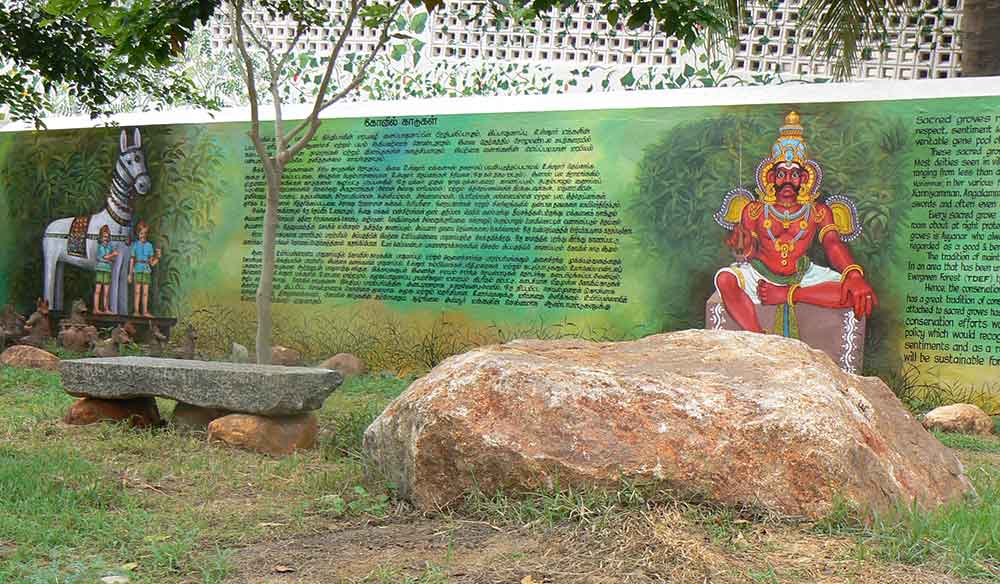
If both large dramatic images and heavy textual information is to be portrayed, it is effective to use wide vertical or wall surfaces for painting. Since too much detail cannot be incorporated these paintings should be viewed from a distance.
Painting on boulders:

The onus here is to use the shape of the stone to form the natural contours of the animal.
Pillar carving
Unlike the puristic stone carvings, the art forms produced so far have combined carving with painting to bring out form, texture and natural colours of the creatures depicted. Carvings on boulders and granite pillars have been produced as art forms in their own right or combined with other media to suit a purpose (for example, granite pillars combined with painted wooden planks were found most suitable for directional signage).
Ferro cement sculpture:
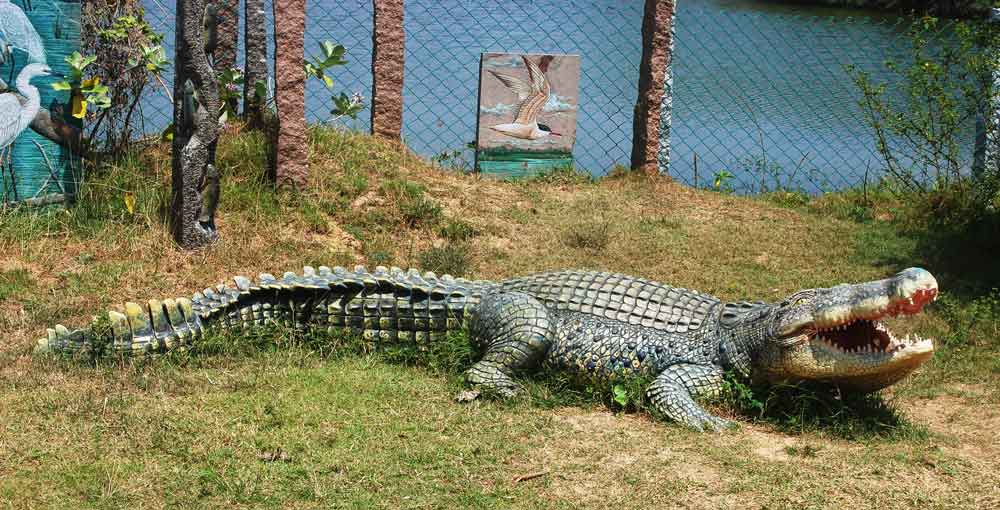
Scaled up versions of animals were found to be eye catching and popular. The onus here is strength and durability since most, if not all, sculptures were designed to occupy spaces where they are accessible to the public. Life sized models too have been produced by us and these occupy protected or supervised spaces as vandalism is an all too familiar phenomenon in any place where visitor recreation is also a feature.
Mosaic

Wildlife art is a forum of imagery that will hold one’s interest and validate the passion for wildlife but occasionally it has a tendency to push us out of our comfort zone. One such medium that borders on the abstract is mosaic. But unlike the majority of mosaics depicting animals the experiments here have a strong element of realism particularly where form, proportion and colour are concerned. The advantage of mosaic over painting is that it is permanent, though detail cannot be incorporated. Nevertheless, such semi-abstract visual solutions can be useful in conveying graphic information.
Cast iron
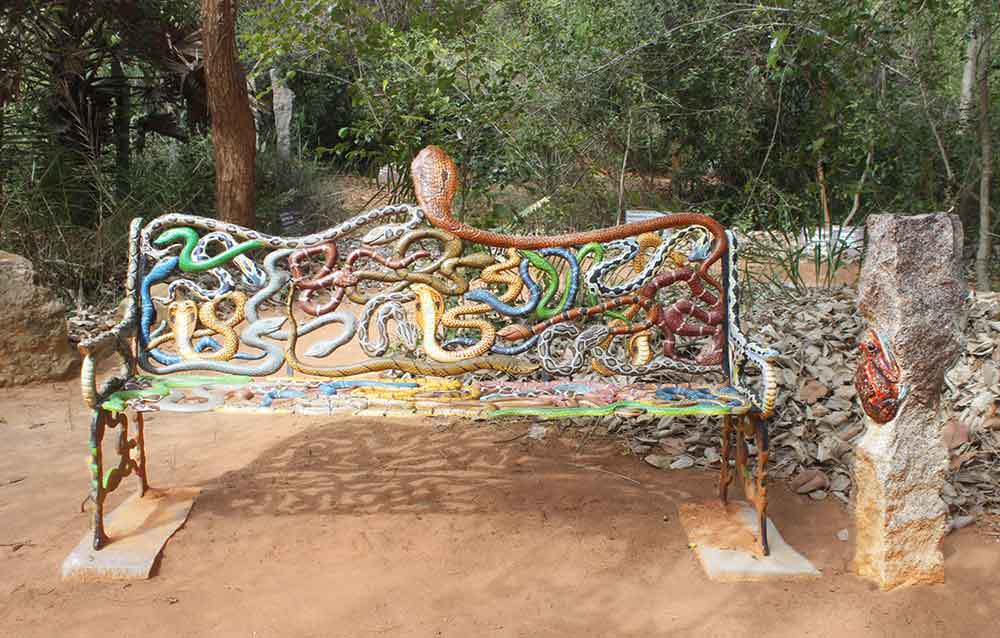
Lethaby mentions that in art “there is a certain mysterious appeal in iron. Iron stands for strength, simplicity, even severity, and, on its sinister side, for cruelty and terror”. The experiments in Pitchandikulam have been limited to date, but it was found that the above comments were quite true concerning strong forms and severity, especially where the so called ‘mysterious and sinister’ creatures like snakes were concerned.
Poster Art
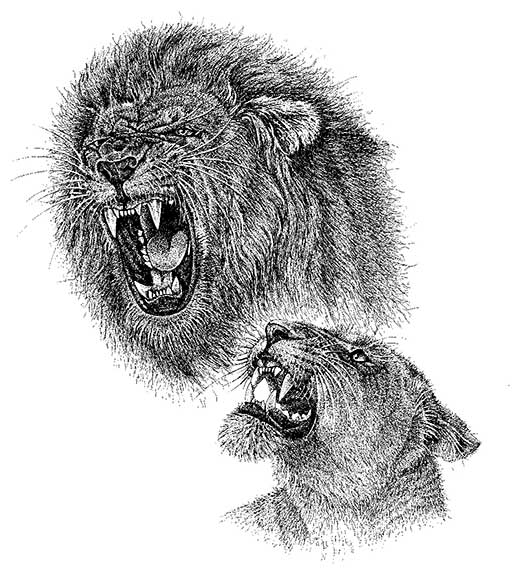 It is said that a picture speaks a thousand words, and though photography can capture a moment, art can share an entire experience and is a unique way of seeing and sharing the world. Poster art, being visually striking and designed to attract attention, was found to be one of the best tools for conservation education. The genre of poster art produced was a combination of research poster and classroom poster as the need was to produce a simple ‘one image’ format that could sensitise people to the biotic wealth of the region as well as be scientifically accurate. Poster art from the time of Toulouse-Lautrec and Cheret had depended on colour but black and white images were also used – for example, the poster publicizing the Exposition Universelle of 1905 at Liege. Both colour and black and white (ink) have been experimented with and the outputs found quite satisfactory.
It is said that a picture speaks a thousand words, and though photography can capture a moment, art can share an entire experience and is a unique way of seeing and sharing the world. Poster art, being visually striking and designed to attract attention, was found to be one of the best tools for conservation education. The genre of poster art produced was a combination of research poster and classroom poster as the need was to produce a simple ‘one image’ format that could sensitise people to the biotic wealth of the region as well as be scientifically accurate. Poster art from the time of Toulouse-Lautrec and Cheret had depended on colour but black and white images were also used – for example, the poster publicizing the Exposition Universelle of 1905 at Liege. Both colour and black and white (ink) have been experimented with and the outputs found quite satisfactory.
Oil on canvas
 Over the years Pitchandikulam has principally concentrated on outdoor art, but of late some artists in Pitchandikulam have begun putting together a collection of paintings for indoor spaces and exhibitions. We wish to state that the efforts shown here are preliminary – basically studies, but in detail, to test our own capabilities and willingness to confirm to studio / exhibition norms. These will be upgraded and combined, with other elements and with inputs from the design team and subject specialists, until a holistically comprehensive set of panels are finally manifested.
Over the years Pitchandikulam has principally concentrated on outdoor art, but of late some artists in Pitchandikulam have begun putting together a collection of paintings for indoor spaces and exhibitions. We wish to state that the efforts shown here are preliminary – basically studies, but in detail, to test our own capabilities and willingness to confirm to studio / exhibition norms. These will be upgraded and combined, with other elements and with inputs from the design team and subject specialists, until a holistically comprehensive set of panels are finally manifested.
Bronze
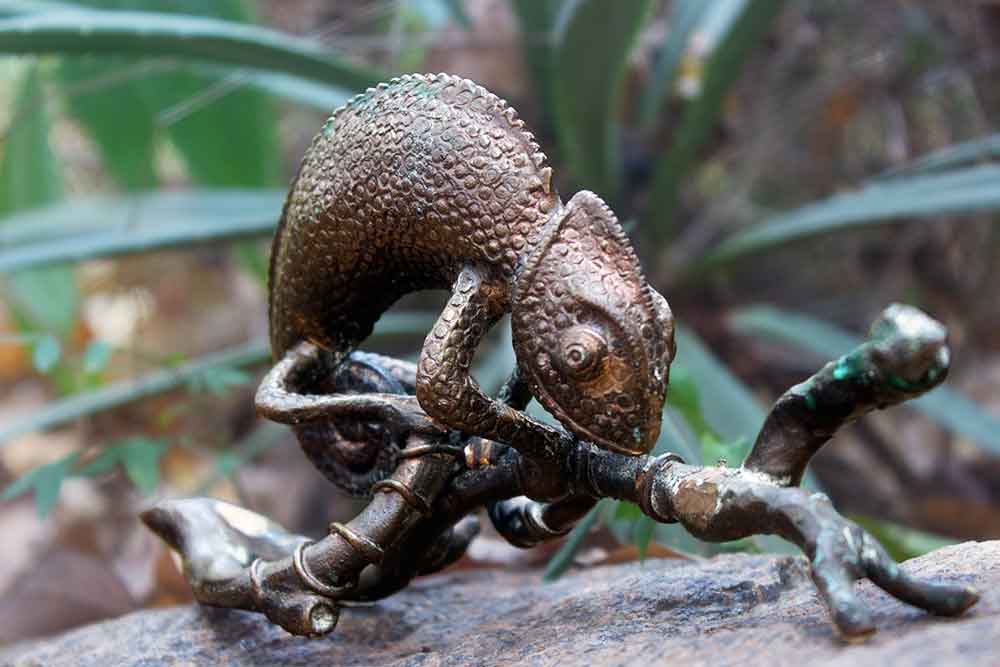 This, being the most popular metal used for ‘cast metal’ sculpture, could not be ignored and Pitchandikulam has also started experiments in this media. The method used is the ancient ‘lost wax’ method which was used in ancient India for making sculptures of various human and animal figurines, especially with a religious connotation. In this medhod, a model is made of wax, covered with a special type of clay and heated so that the clay melts and runs out of a hole specially left for that purpose, leaving an empty core. Molten metal is then poured into the empty space, left to cool and the clay shell broken to reveal the basic form. Fine detail is added using more molten metal and a series of tools to give the final finished product.
This, being the most popular metal used for ‘cast metal’ sculpture, could not be ignored and Pitchandikulam has also started experiments in this media. The method used is the ancient ‘lost wax’ method which was used in ancient India for making sculptures of various human and animal figurines, especially with a religious connotation. In this medhod, a model is made of wax, covered with a special type of clay and heated so that the clay melts and runs out of a hole specially left for that purpose, leaving an empty core. Molten metal is then poured into the empty space, left to cool and the clay shell broken to reveal the basic form. Fine detail is added using more molten metal and a series of tools to give the final finished product.
Industrial plasticine or clay
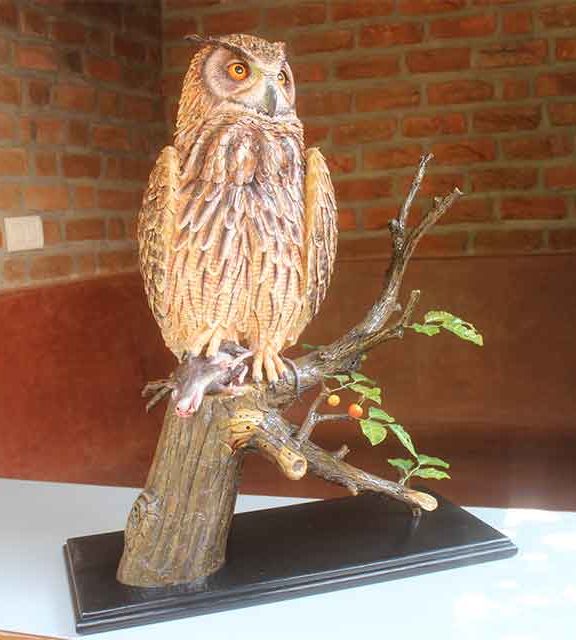 Clay is the most favoured media of sculptors concentrating on ‘add on’ techniques because this can give a refined and true to life look than any other three dimensional media. Pitchandikulam has begun experimenting in the modern derivative of this media and the preliminary results found very satisfactory.
Clay is the most favoured media of sculptors concentrating on ‘add on’ techniques because this can give a refined and true to life look than any other three dimensional media. Pitchandikulam has begun experimenting in the modern derivative of this media and the preliminary results found very satisfactory.
The Art department is available for commissions of any size.
Please have a look on Our works and contact us for more information..
